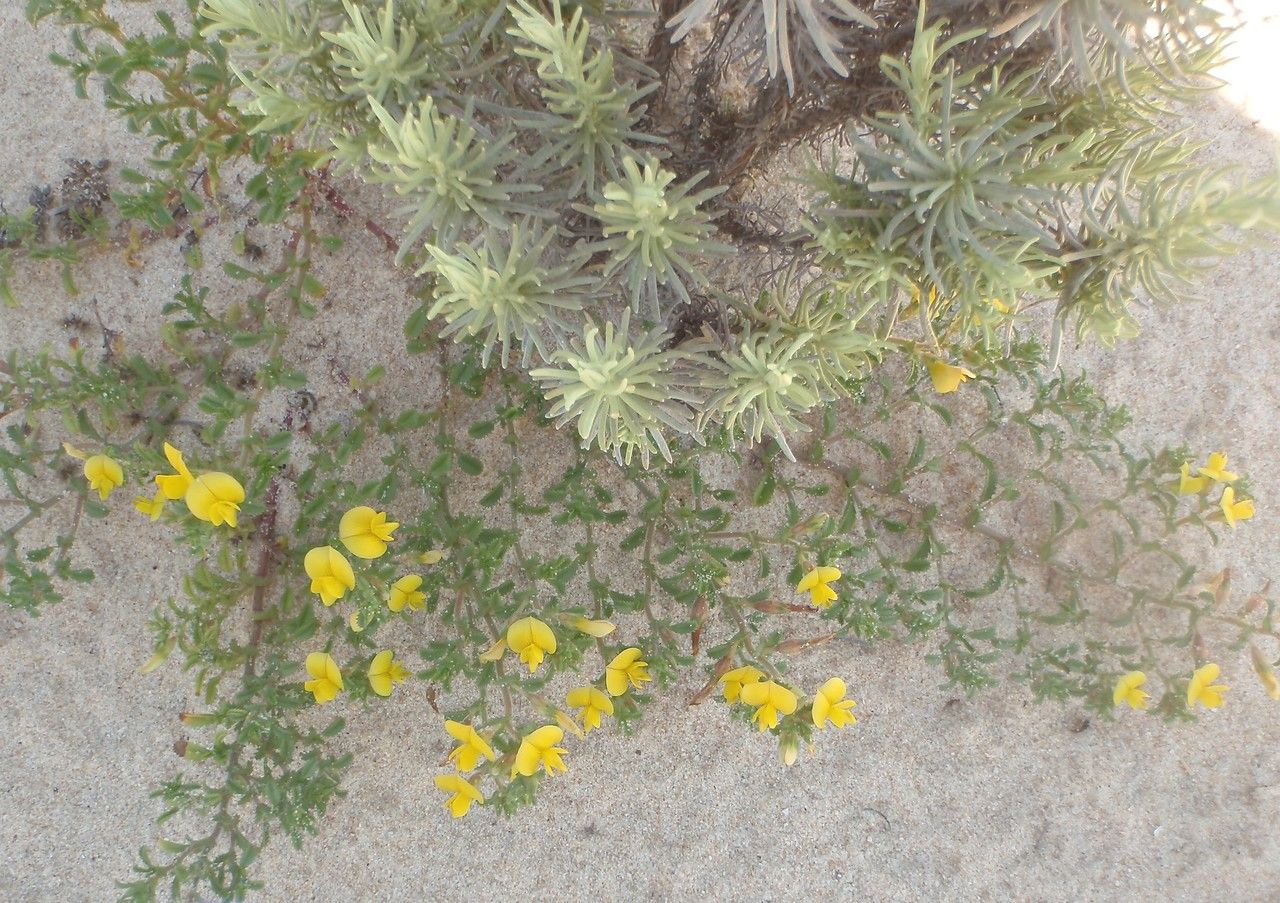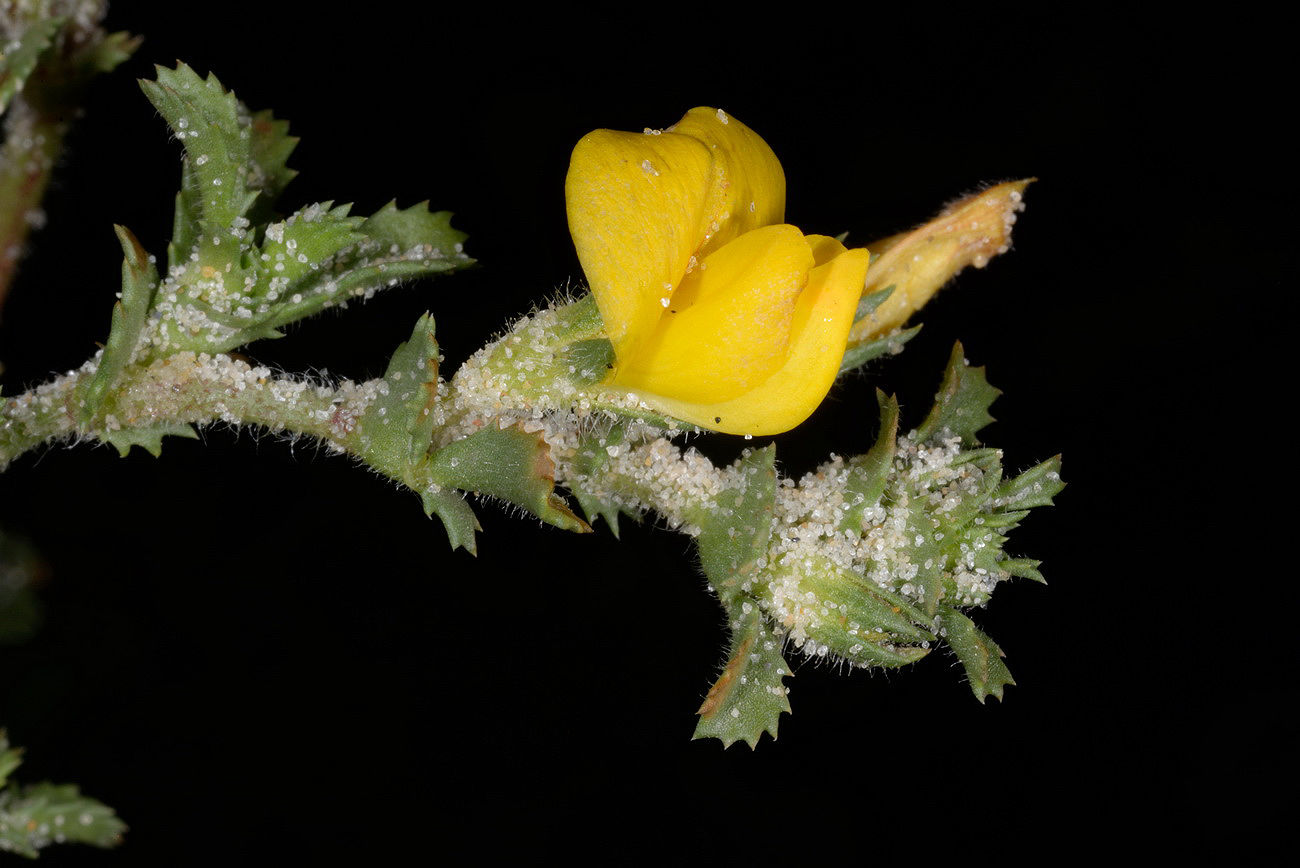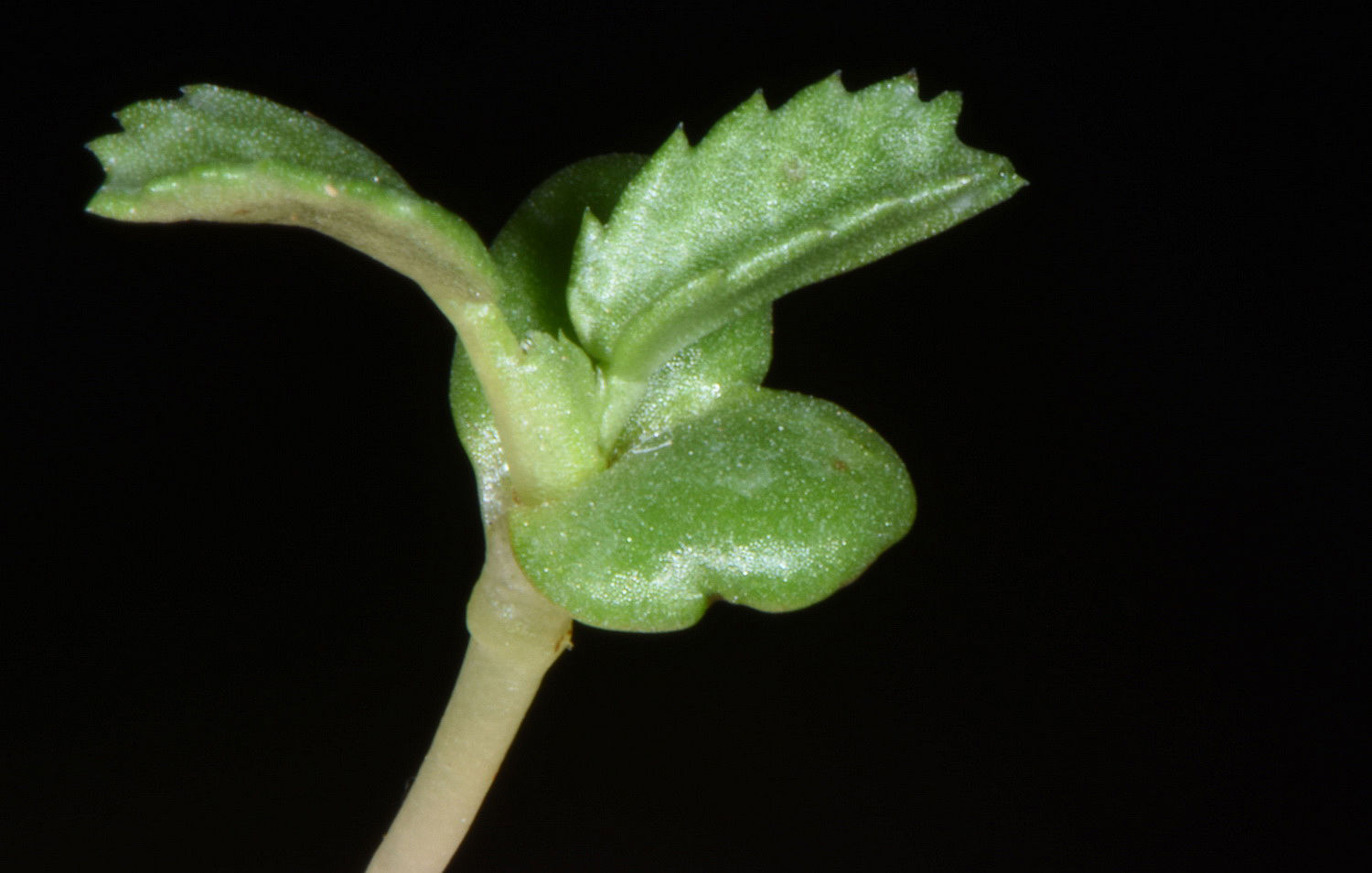Variegated Restharrow
ononis variegata
Also known as: ["Variegated Ononis","Variegated Rest-harrow"]
Overview
A perennial herbaceous plant with variegated foliage and small, pea-like flowers, native to Mediterranean regions.
Benefits & Perks
["wildlife attractant (bees, butterflies, birds)","drought tolerant","aesthetic foliage"]
Botanical Classification
| Phylum: | Magnoliophyta |
| Class: | Magnoliopsida |
| Order: | Fabales |
| Family: | Fabaceae |
| Genus: | Ononis |
| Botanical Name: | Ononis variegata |
Plant Characteristics
Basic Information
- Category: Herbs & Weeds
- Suitable Location: rock gardens, border plantings, or containers in sunny areas
- Suitable For:
- Is Weed: No
- Allergenicity: low
Environmental Needs
- Climate: {"temperatureRange":"5–35°C"}
- Hardiness: {"zones":"7–10"}
- Misting: rarely required, only if ambient humidity is very low
- Drainage: Fast-draining to prevent waterlogging.
- Soil Type: Well-draining, loamy soil with some organic matter; tolerates poor soils.
Maintenance Level
- Maintenance Level: moderate
- Toughness Level: moderate
- Pruning Frequency: Annually in early spring; light pruning can be done as needed.
- Pruning Intensity: Moderate; remove up to one-third of growth if overgrown.
Care Details
Ideal Sunlight Coverage:
Full sun (6–8 hours/day); tolerates partial shade in hot climates.
Sunlight Tolerance Tips:
Acclimate gradually to intense sunlight; protect from harsh midday sun; adjust placement based on seasonal light changes.
Care Requirements
Care Difficulty
moderatemoderate
Sunlight
full sun to partial shade
Rotate plant for even light; use sheer curtains in intense sun; avoid direct afternoon sun in summer.
Watering
every 7–10 days during active growth, reduce in winter
Water thoroughly but infrequently; ensure soil dries between waterings; avoid overwatering.
Soil
well-draining, sandy loam with moderate organic content
pH: Slightly acidic to neutral (pH 6.0–7.0).
Use a mix of potting soil and perlite; avoid heavy clay soils; ensure pots have drainage holes.
Temperature
Prefers 60–75°F (15–24°C); tolerates mild frosts but thrives in moderate temperatures.
Avoid sudden temperature shifts; protect from drafts; maintain moderate humidity.
Fertilizing
every 4–6 weeks during growing season, none in winter
Fertilize sparingly; flush soil occasionally to prevent salt buildup; stop in dormant periods.
Propagation
Methods
Stem cuttings or division; stem cuttings are more common for home growers.
Step-by-Step Propagation Guide
- Take a 4–6 inch cutting.
- Remove lower leaves.
- Dip in hormone (optional).
- Plant in medium.
- Keep moist.
Best Time: Spring or early summer when the plant is actively growing.
Environment
Warm, humid environment with indirect light; maintain consistent moisture.
Medium
Well-draining potting mix with perlite or sand; can root in water initially.
Hormone
Rooting hormone can be used but is not strictly necessary.
Timeline
Roots develop in 3–6 weeks; new growth appears in 2–4 months.
Tools Needed
Pruning shears, rooting hormone, small pots, well-draining mix.
Quick Tips
Use healthy, non-flowering stems; keep cuttings out of direct sun; maintain humidity with a plastic bag.
Pruning & Repotting
Pruning Guide
Method
Pinch back tips for bushiness; cut just above a leaf node or bud.
Pruning Plan
Prune to maintain shape, encourage bushiness, and remove dead or diseased growth.
Tools
Pruning shears, clean knife, gloves.
Checklist
Sanitize tools; prune dead/damaged growth; shape plant; clean up debris.
Repotting Guide
Best Season
Spring, before new growth begins.
Pot Size
Choose a pot 1–2 inches larger in diameter than the current one.
Method
Remove plant gently; trim roots if needed; place in new pot with fresh soil; water lightly.
Suggestions
Repot every 2–3 years or when roots fill the pot; beneficial for growth and soil health.
Checklist
Check root bound status; prepare new pot; use fresh soil; water after repotting.
Advanced Care Tips
Watering Mastery
Watering Checklist
Check soil moisture; water deeply; ensure drainage; adjust for season.
How to Apply Water Properly
Water at the base of the plant, ensuring moisture reaches the root zone; allow excess water to drain away; water in the morning to reduce evaporation.
Watering Schedule Tips
Water deeply once the top inch of soil feels dry; reduce frequency in winter to prevent root rot.
Soil Improvement
Add perlite or sand for drainage; incorporate compost for fertility; ensure good aeration.
Temperature Stress Management
Signs of Temperature Issues
Wilting, yellowing leaves, or stunted growth in extreme heat or cold.
Cold Stress
Slows growth; may suffer leaf damage or dieback in prolonged freezing temperatures.
Solution: Provide frost protection; move to a sheltered location; mulch around roots.
Hot Stress
Leaves may scorch, wilt, or drop in excessive heat; growth may slow.
Solution: Provide shade during peak heat; increase watering; improve air circulation.
Fertilizing Guide
Fertilizing Checklist
Check season; dilute fertilizer; apply to moist soil; rinse pot periodically.
Fertilizing Method
Use balanced liquid fertilizer diluted to half strength every 4–6 weeks during growing season; avoid fertilizing in winter.
Common Problems & Solutions
Toxicity Warning
Cats
Slightly ToxicCats may experience mild gastrointestinal symptoms if they ingest parts of Ononis variegata, particularly the seeds and roots. The plant poses a low risk to cats, but ingestion should be prevented.
⚠️ Symptoms:
🌿 Toxic Parts:
⚡ Toxic If:
if eaten
Dogs
Slightly ToxicIn dogs, ingestion of Ononis variegata seeds and roots may lead to mild gastrointestinal upset. The plant is not considered highly toxic to dogs, but consumption should be avoided to prevent discomfort.
⚠️ Symptoms:
🌿 Toxic Parts:
⚡ Toxic If:
if eaten
Humans
Slightly ToxicOnonis variegata contains compounds that can cause mild gastrointestinal distress and other mild systemic effects when ingested in significant quantities. The plant's toxicity is generally low, but caution is advised due to potential cumulative effects.
⚠️ Symptoms:
🌿 Toxic Parts:
⚡ Toxic If:
if eaten
Frequently Asked Questions
Q: Is Ononis variegata suitable for container gardening?
A: Yes, but it requires well-draining soil and regular watering.
Q: Does Ononis variegata attract pollinators?
A: Yes, its flowers attract bees and butterflies.
Q: How often should Ononis variegata be watered?
A: Water moderately, allowing the soil to dry slightly between waterings.
Quick Reference
| Family: | Fabaceae |
| Care: | moderate |
| Light: | full sun to partial shade |
| Water: | every 7–10 days during activ |
Get Expert Care Tips
Download the Plantious app for personalized care reminders and plant identification!
Google Play App Store








